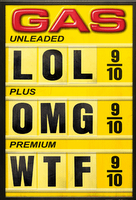Bureau of Land Management Director Admits Federal Regs Discourage Drilling
[BLM Director Bob Abbey] noted that the federal regulations applied to oil and gas development simply make it more expensive than producing on state or private land. … almost in the same breath, Abbey remarked that the administration is currently considering raising onshore production royalty rates from 12.5 percent to the 18.75 percent charged for offshore oil;
By Robin Millican at Institute for Energy Research
 In a hearing before the Senate Appropriations Subcommittee on Interior last Wednesday, Bureau of Land Management Director Bob Abbey was questioned about the issue of oil and gas production on federal lands. Although the Obama administration has been eager to report that domestic oil and gas production is rising, government data shows that increases have occurred principally on state and private lands while production from federal lands has decreased significantly. To address the issue of declining production on federal lands, Director Abbey offered the following:
In a hearing before the Senate Appropriations Subcommittee on Interior last Wednesday, Bureau of Land Management Director Bob Abbey was questioned about the issue of oil and gas production on federal lands. Although the Obama administration has been eager to report that domestic oil and gas production is rising, government data shows that increases have occurred principally on state and private lands while production from federal lands has decreased significantly. To address the issue of declining production on federal lands, Director Abbey offered the following:
“I will say this, where the industry decides to produce or where they decide to develop is up to them,” Abbey told the Senate Interior appropriations subcommittee. “It’s a decision that’s being determined by the market.”
While Abbey’s logic seems sound—of course companies rationally choose where to produce based on where the greatest resource potential is—he omits a key point: oil and gas companies choose where to produce, but they can only choose from what’s made available to them. Right now only 3 percent of federal lands are leased for oil and gas production, and crucial areas like ANWR, the Atlantic, Pacific, and Eastern Gulf OCS remain mostly or totally off-limits. These are resource-rich areas, and they certainly aren’t untapped because the market passed the opportunity up.
Moreover, take the case of Western oil shale deposits, which are estimated to contain up to 5 times the amount of Saudi Arabia’s oil reserves. About 70 percent of known oil shale is on land owned by the federal government, and those sources are said to be the richest deposits – the ones markets would dictate would be the first to be accessed in order to ensure commerciality. In what can best be described as a catch-22 situation, the administration has closed off 75 percent of the small amount of federal land containing oil shale resources that it had intended to offer for lease on the premise that industry hasn’t yet proven that oil shale is economically and technically viable. In this case, the industry didn’t decide not to explore for oil shale—rather, the decision was made for it by Abbey’s agency. Or rather by his boss, Interior Secretary Ken Salazar, who has long opposed attempts to hasten the day when oil shale would replace overseas oil for as long as we will need oil.
In addition to restrictions on available federal lands, a more lucid explanation for lagging production on federal land came from Abbey himself, who noted that the federal regulations applied to oil and gas development simply make it more expensive than producing on state or private land. Whatever moment of clarity occurred, however, was fleeting—almost in the same breath, Abbey remarked that the administration is currently considering raising onshore production royalty rates from 12.5 percent to the 18.75 percent charged for offshore oil; in fact, the Department of Interior’s upcoming budget depends on an assumed 50 percent increase in royalty rates. He did not explain how adding costs to energy production on lands he already said are more expensive to produce on than private and state lands might assist the President’s promise to the American public that he “would do everything in my power” to bring gasoline prices down. Generally, more supply assists in lower the pricing mechanism that markets recognize as the “supply and demand” system.
With gas prices rising, the President cannot continue to justify restricting federal lands to oil and gas production while deeming drilling a “bumper sticker solution.” In 2008, when President Bush lifted the executive drilling moratorium that applied to most of the Outer Continental Shelf, the price of oil immediately dropped more than $9 per barrel. Oil is a globally traded commodity, and markets closely follow the decisions of policymakers to determine what future supply will look like.
If President Obama wanted to signal that the United States is open to production, a good place to start would be to revise his administration’s current five-year offshore drilling proposal. The 2012-2017 plan put forth last November prohibits new offshore drilling and essentially only allows lease sales to occur in areas that were open when 85 percent of the lower 48 OCS was under the moratorium that was lifted in 2008. Increased domestic production not only creates jobs and economic growth here in the U.S., but also has the potential to lower gas prices at a time when families can ill-afford to pay $5 for a gallon of gasoline.
He might also ask his Secretary of Interior and BLM Director Abbey to go back and study what markets are telling them about their dismal record of leasing and production on the 2.46 billion acres of federal mineral estate that is lying fallow and contributing to higher gas prices, even as private and state lands produce all of the increases in supply that are happening in the U.S.
Help Make A Difference By Sharing These Articles On Facebook, Twitter And Elsewhere:
